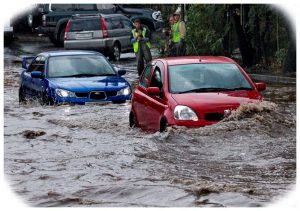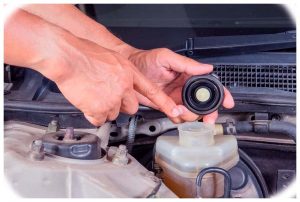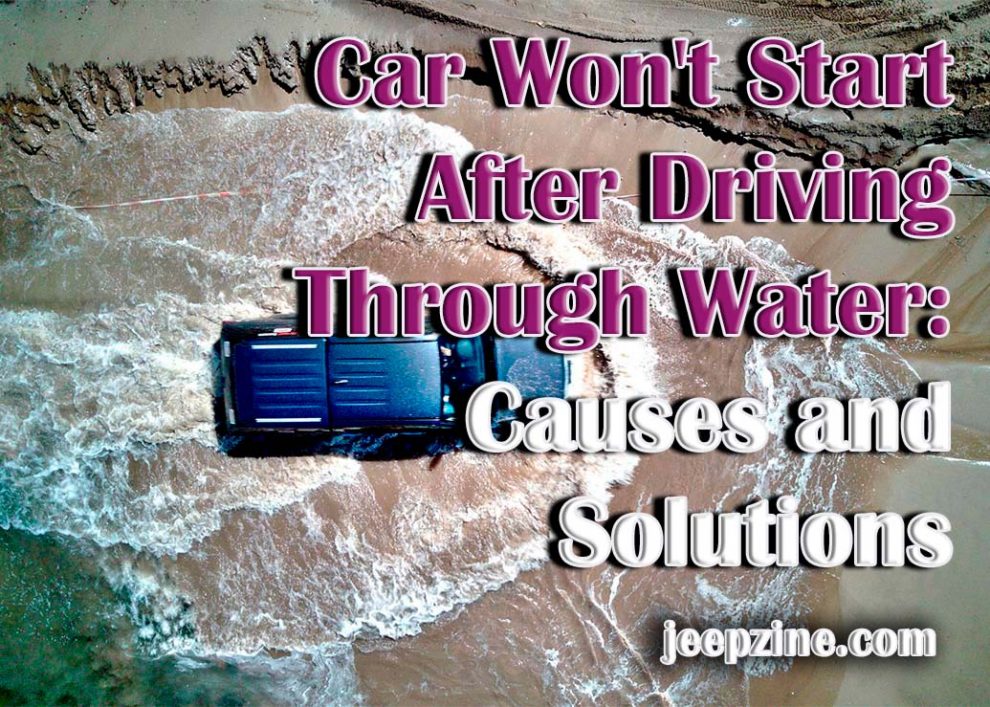Driving through a large body of water, such as a lake or river, can be an exhilarating experience, but it can also cause some significant damage to your car and can end up causing car starting issues. If you have recently driven through water and your car won’t start, several possible causes exist. In this guide, we’ll help you identify the potential causes of why your car won’t start after driving through water and suggest the best steps to take to diagnose and repair the problem.
Causes of a Car that Won’t Start After Driving Through Water
Three main systems in your car are vulnerable when driving through deep water: the electrical, fuel, and oil systems. All three of these systems are essential for starting a vehicle, so any disruption or damage to them could prevent it from starting properly.

Fuel System Damage: Driving through water can also cause damage to your vehicle’s fuel system, which could prevent the fuel from reaching the engine and thus preventing it from starting. If your vehicle has a carburetor, water can enter the intake manifold and ruin the mixture of air and fuel, thus causing an inability to start. In addition, if water enters the fuel filter, this could block or reduce the amount of fuel that can get to your engine, which would cause it not to start.
Oil System Damage: Water entering your oil system could be problematic as oil is essential for lubricating internal components such as pistons, valves and bearings to function properly when running. If there is too much water in your oil system this can alter its viscosity which may prevent it from performing its lubricating function properly resulting in issues with starting a car or any other performance issues you may experience while driving it.
Steps to Diagnose and Repair the Problem
Check for Obvious Signs of Damage: The first step you should take when attempting to diagnose why your car won’t start after driving through water is to check for any obvious signs of damage such as water in the interior of the cabin or any visible corrosion on electrical components.

Test the Battery and Alternator: Once you have checked for possible signs of damage, it’s time to test your battery and alternator, as they are essential components when starting a vehicle. To test them properly, you will need a multimeter to measure DC voltage to see if either component produces enough power to start your car. Suppose there is an issue with either component. In that case, this should be investigated further by a professional mechanic as it could involve replacing them or other electrical components associated with them, such as wiring or fuses, depending on the damage.
Test the Starter Motor and Relay Switch: The starter motor is responsible for cranking your engine when you turn the key, and the relay switch is what triggers it to start. If either one of these components is faulty, it could cause your car not to start. To test them, you can use a multimeter to check for any current or voltage readings, and if there are none, then this indicates that one or both components may need to be replaced.
Professional Diagnosis and Repair Services
Attempting to diagnose why your car won’t start after driving through water can be difficult as it often involves removing parts and testing electrical components, which requires specialized tools. Suppose you’re not comfortable attempting this yourself. In that case, it may be best to get professional help in order to accurately identify the source of the problem and get your car running again as quickly as possible.
How to Prevent Car Starting Issues After Driving Through Water?
It’s always best practice when driving near large bodies of water such as lakes or rivers, particularly during heavy rainfall periods, is to avoid driving through any standing water that could be deep enough for your car’s systems to become submerged at all costs. This will help ensure that none of your car’s vital systems become damaged due to submersion in water and in turn, avoid any starting issues.
Conclusion
Driving through water can cause significant damage to your car and can result in it not starting properly. In this guide, we have looked at the possible causes of why your car won’t start after driving through water, including electrical system damage, fuel system damage, and oil system damage. We have also outlined the steps to diagnose and repair the problem and when it is best to seek professional help with diagnosing and repairing your car if necessary. Finally, we have discussed how to prevent car starting issues after driving through water by avoiding deep bodies of water altogether during heavy rainfall periods. By following this advice, you will be well on your way to ensuring your car starts properly after driving through water.


Add Comment